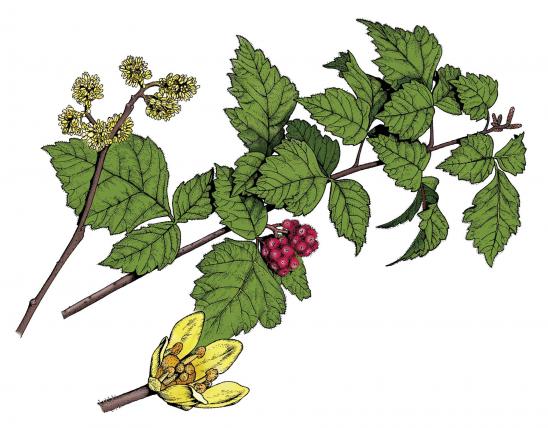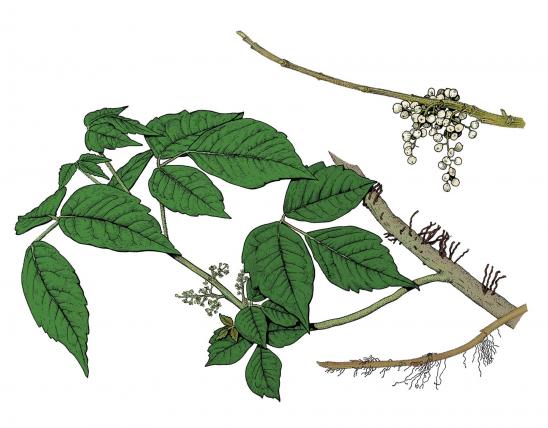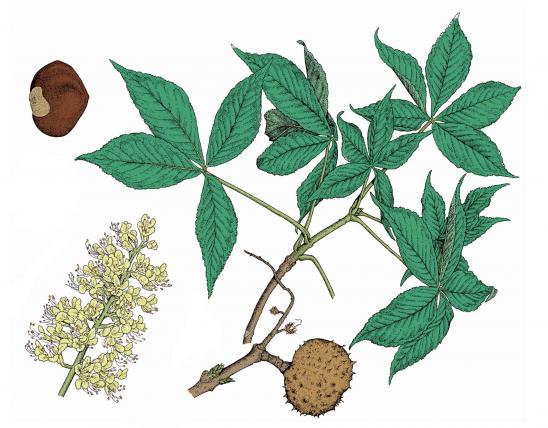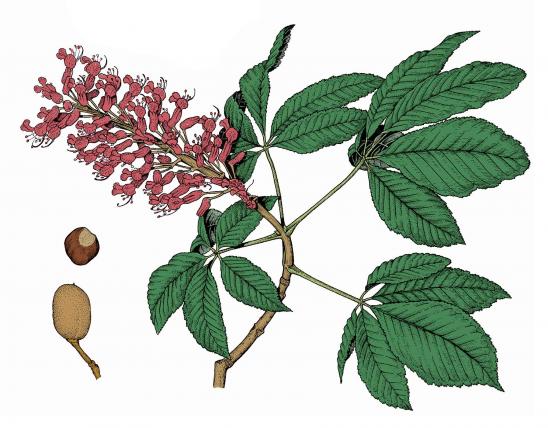
American bladdernut is a thicket-forming shrub or small tree, with branches near the top, that produces clusters of bell-shaped white flowers in spring and unusual 3-parted air-filled capsules in late summer that turn papery and persist into winter.
Leaves are opposite, compound, with 3 leaflets, each leaflet 1½–2 inches long, egg-shaped or oval, margins sharply and finely toothed, with a pointed tip. Upper surface bright green, hairy on the veins; lower surface slightly paler, hairy. End leaflet stalk ½–1½ inches long, much longer than the stalks of the side leaflets; side leaflets nearly sessile. Leaflet stalks and petioles hairy. The leaves remain green until late in autumn, eventually turning yellowish green.
Bark is grayish brown, smooth on young shrubs and slightly grooved and flaky on older trunks.
Twigs are flexible, smooth, reddish brown to greenish brown, often striped, curved, ascending.
Flowers April–May, in drooping clusters 2–4 inches long on a short stem arising from upper leaf axils (from twigs of the previous year); flowers small, white, bell-shaped, about ¼ inch long; sepals and petals nearly the same length; petals 5, about ¼ inch long, tips blunt; stamens 5, extending beyond the petals.
Fruits in August, persistent until midwinter, solitary or in clusters of 2–5, strongly inflated, bladderlike, drooping capsules 1¼–2½ inches long, 3-lobed, net-veined, green turning to brown, opening at the tip; seeds 1–4, about ¼ inch long, rounded, somewhat flattened, yellowish to grayish brown, hard, shiny.
Similar species: Another shrub, called hop tree, wafer ash, or stinking ash (Ptelea trifoliata), also has trifoliate leaves, but bladdernut has opposite (not alternate) leaves and a relatively long-stalked central leaflet; the flowers and fruits of the two shrubs are quite different.
Habitat and Conservation
Status
Human Connections
Ecosystem Connections

































